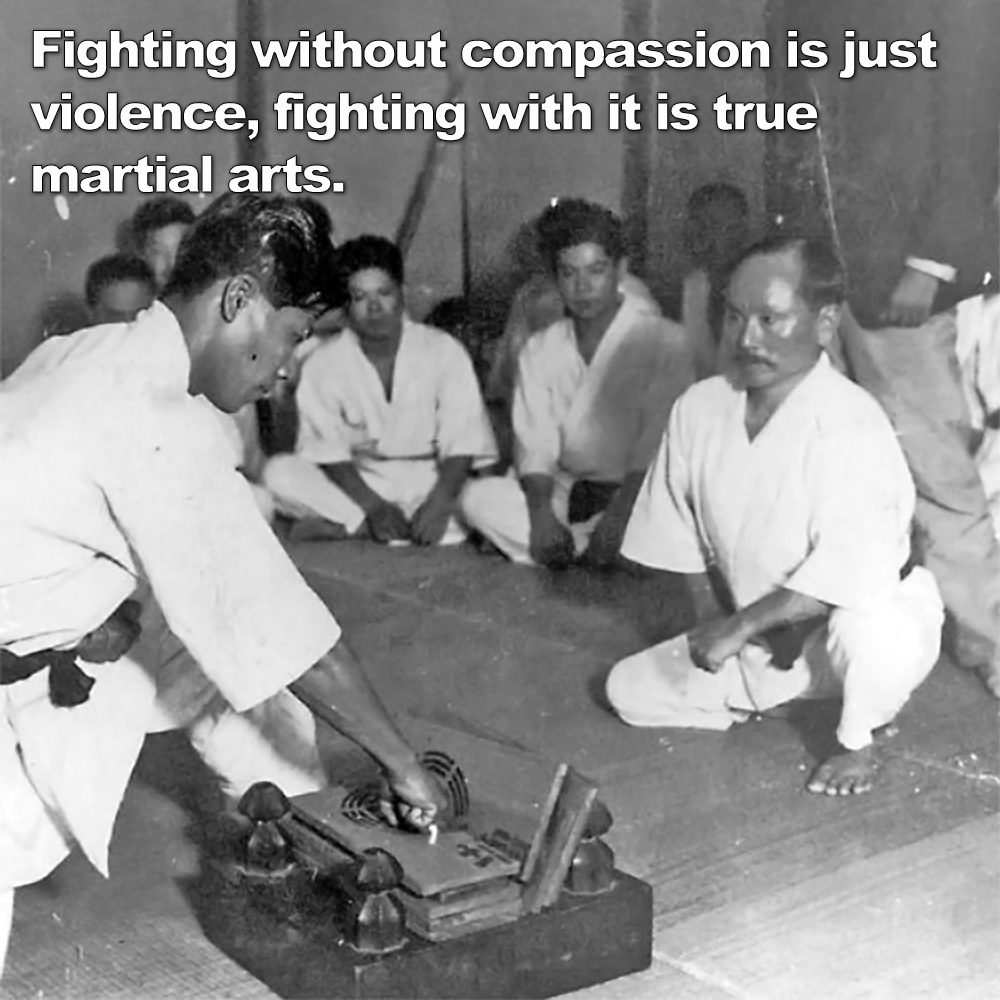
Fighting without compassion is just violence, fighting with it is true martial arts.
Posted by ADAM CARTER on SEP 23, 2024

Fighting without compassion is just violence, fighting with it is true martial arts.
(Approx 2 minute 25 second read)
The martial arts seen by many as being centered around combat and physical confrontation.
It’s in the name, after all – yet that’s only a small fraction of the truth.
When people think of martial arts, they often imagine aggressive individuals wanting to fight. But for those who are naturally introverted or non-confrontational, the idea of joining a dojo may seem counterintuitive. Why would someone with no interest in fighting, and perhaps an aversion to conflict, willingly step into a space where combat is practiced?
Over the years, I’ve welcomed many students who, at first, were shy, reserved, or hesitant about training. They didn’t come looking to learn to fight but were seeking a way to protect themselves.
These individuals walked into the dojo with no desire for confrontation. Many were introverted, shy, and far from the stereotype of the fierce fighter. What they found in the dojo, however, wasn’t a place that encourages violence, but an environment that fosters so much more.
The dojo environment is unique. It’s a place of structure, discipline, and respect, but also one of safety and encouragement. The principles and techniques we teach are tools, not immediate expectations. Students aren’t expected to be warriors on day one, or even on day one hundred and one. Instead, they’re encouraged to grow at their own pace, step by step.
I’ve seen students walk into the dojo who could barely make eye contact, let alone imagine themselves engaging in sparring or any kind of physical encounter. These students often start on the back foot – hesitant, unsure, and sometimes questioning if martial arts is truly for them. But over time, something remarkable happens. Through regular practice, repetition, and encouragement, these people start to change – not because they’ve learned how to fight, but because they begin to shed layers of insecurity and self-doubt that held them back.
For these students, it isn’t just about learning to punch harder or kick faster. It’s about discovering their own capacity for strength – not just physically, but mentally and emotionally.
One of the most rewarding aspects of teaching is watching shy, introverted individuals transform. I’ve had students who, even after months of training, were still a bit reluctant to spar or engage in combative drills. They did it, but you could see how uncomfortable they were.
What they often didn’t realize, though, was that their transformation was happening in subtle ways. Their posture improved, they walked with more confidence, and they began to speak up more – both in and outside of the dojo.
These students weren’t becoming fighters; they were becoming confident, capable individuals. Ironically, as they developed a greater capacity for self-defense, they also gained a deeper understanding of how to avoid conflict altogether.
It’s crucial to understand that learning martial arts doesn’t turn someone into a violent person. In fact, it’s quite the opposite. Martial artists know they have the capacity to defend themselves in many different ways, and that knowledge alone often makes actual physical conflict unnecessary.
One of the most inspiring things is seeing how the changes inside the dojo carry over into everyday life. I’ve seen introverted individuals who once avoided eye contact walk with their heads held high – not out of arrogance, but out of newfound confidence. They’ve found the strength to step out of their shell, embrace their potential, and become their best selves. And, importantly, they can protect themselves too.
Written by AC.
![]() Photo Credit: Gichin Funakoshi – the quote is not confirmed.
Photo Credit: Gichin Funakoshi – the quote is not confirmed.
